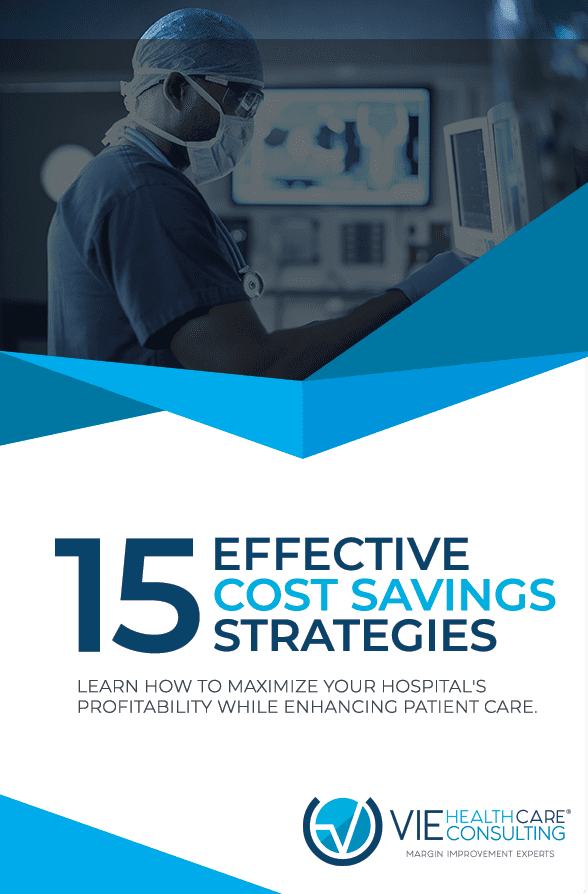Analyzing Costs for Physician Preference Items
This article was written by Lisa Miller.
When selecting your healthcare consulting provider, one of the recommendations I make is that hospitals look for evidence of expertise in the form of case studies. This case study in cost savings covers physician preference items.
Why VIE Healthcare Consulting is different
Our “deliverable” is money in the form of significant cost savings and guaranteed margin improvement to enable you to focus on delivering better patient care.
Case Study
“High Risk”/”Difficult” Expense Reduction with Physician Preference Items
One area with potential for significant cost savings in most hospitals is Physician Preference Items (PPIs).
PPIs can be defined as “devices or supplies used in medical procedures that are purchased and used at the discretion of the physician.”
Problems arise because, while physicians determine what items are purchased, the hospitals pay for the products ordered. In many cases, initiatives in this area have often been met with resistance or resulted in strained hospital-physician relationships and hospital administrators seeking alternative ways to save costs.
PPIs may be costing your hospital millions of excess dollars every year.
Physician preference items may be costing your hospital millions of dollars every year. Click To Tweet
VIE Healthcare can help, as the following case study demonstrates.
Our Client: A 300-bed Hospital in the Northeast
The Problem
Our client was paying list price on “new technology” preferred by physicians.
The “A” implant cost $9,500.00 (per level). The manufacturer refused to agree to any discounts, on the grounds that it was new technology and it reduced patients’ length of stay in the hospital.
They suggested that a discount of up to 10% might be made available in exchange for volume commitments, but negotiations reached a stalemate.
The Solution
VIE Healthcare requested, obtained and analyzed the past 12 months of reimbursement data from the hospital and identified the following:
- 65% of the cases were reimbursed by Medicare. (Medicare reimburses at the same DRG for a 1-level or 2-level or more.)
- The data revealed that over 70% of the cases were 2-level or 3-level.
- The spine implants alone cost the hospital $19,000 or $28,500.
- The Medicare reimbursement for the entire surgery was $21,000.
On presenting our findings and data to the spine surgeon, he was surprised as he believed that the hospital had in fact been making money on these implants.
This shows clearly how important it is to analyze the reimbursement data.
The Result

With the surgeon’s commitment, the CFO, the supply chain director and our team of experts from VIE Healthcare, we negotiated a 37% reduction in implant pricing from the vendor.
The 10% discount tied to volume commitments previously offered would still have resulted in losses for the hospital due to their payer mix.
Negotiating with reimbursement data and the assistance of an independent healthcare consultant is a powerful and effective solution in these circumstances.
Conclusion
It is important to note that two evidence-based negotiations must usually occur as demonstrated by this case study:
- The first takes place with the physicians who are on the frontline, practicing medicine and performing surgery. The expertise and autonomy of the physicians must form an integral part of the problem-solving exercise.
- The second negotiation involves the vendor or vendors.
On this occasion, VIE Healthcare’s direct involvement changed the existing dynamic between doctors and hospital administrators and also the hospital and its vendors.



